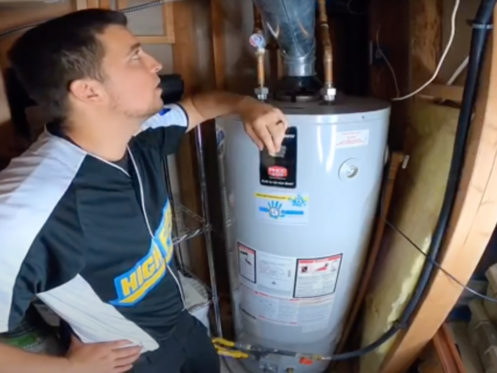Expert Tips for Caring for Your Home's Hot Water System
Expert Tips for Caring for Your Home's Hot Water System
Blog Article
In this article in the next paragraphs you will discover additional dependable information and facts regarding How to Maintain a Hot Water Heater in a Few Simple Steps.

Warm water is crucial for everyday convenience, whether it's for a revitalizing shower or washing dishes. To guarantee your warm water system runs efficiently and lasts much longer, routine upkeep is key. This article supplies useful tips and understandings on exactly how to preserve your home's warm water system to prevent disruptions and pricey repair services.
Introduction
Keeping your home's hot water system might appear difficult, but with a few straightforward steps, you can guarantee it operates efficiently for years ahead. This guide covers every little thing from understanding your hot water system to do it yourself upkeep tips and understanding when to call in expert aid.
Significance of Keeping Your Hot Water System
Normal maintenance not only expands the lifespan of your hot water system yet also ensures it operates efficiently. Ignoring upkeep can result in lowered efficiency, higher energy expenses, and also early failure of the system.
Indications Your Warm Water System Demands Maintenance
Recognizing when your hot water system needs interest can protect against major problems. Keep an eye out for indicators such as inconsistent water temperature level, weird noises from the heater, or rustic water.
Recognizing Your Warm Water System
Prior to diving into upkeep jobs, it's handy to understand the basic elements of your warm water system. Commonly, this consists of the hot water heater itself, pipelines, anode rods, and temperature level controls.
Regular Monthly Upkeep Tasks
Regular monthly checks can help capture small problems prior to they intensify.
Purging the Hot Water Heater
Flushing your hot water heater eliminates sediment buildup, enhancing efficiency and prolonging its life.
Checking and Changing Anode Rods
Anode rods avoid deterioration inside the container. Inspecting and changing them when worn out is important.
Examining and Readjusting Temperature Level Setups
Readjusting the temperature level setups makes sure optimum efficiency and safety.
DIY Tips for Upkeep
You can carry out a number of maintenance tasks yourself to maintain your warm water system in leading condition.
Checking for Leakages
Consistently examine pipelines and links for leaks, as these can bring about water damages and greater bills.
Evaluating Pressure Relief Valves
Examining the stress safety valve guarantees it operates appropriately and stops extreme pressure buildup.
Insulating Pipes
Protecting hot water pipes reduces heat loss and can save power.
When to Call a Professional
While DIY maintenance is helpful, some concerns call for specialist experience.
Facility Problems Requiring Specialist Assistance
Examples include major leaks, electrical troubles, or if your hot water heater is continually underperforming.
Routine Expert Upkeep Benefits
Specialist upkeep can include complete examinations, tune-ups, and guaranteeing conformity with security requirements.
Verdict
Normal maintenance of your home's warm water system is essential for effectiveness, longevity, and expense savings. By complying with these pointers and understanding when to look for professional help, you can guarantee a reputable supply of hot water without unforeseen interruptions.
How to Maintain an Instant Hot Water Heater
Before tinkering with your hot water heater, make sure that it’s not powered on. You also have to turn off the main circuit breaker and shut off the main gas line to prevent accidents. Also turn off the water valves connected to your unit to prevent water from flowing into and out of the appliance. 2. When you’re done, you have to detach the purge valves’ caps. These look like the letter “T†and are situated on either side of the water valves. Doing so will release any pressure that has accumulated inside the valves while at the same time avoid hot water from shooting out and burning your skin. 3. When the purge valves’ caps are removed, you have to connect your hosing lines to the valves. Your unit should have come with three hoses but if it didn’t, you can purchase these things from any hardware or home repair shops. You can also get them from retail stores that sell water heating systems. Read the user’s manual and follow it to complete this task properly. When the hosing lines are connected, open the purge port’s valves. 4. You should never use harsh chemical cleaners or solutions when cleaning your unit. Make use of white vinegar instead. It should be undiluted and you’ll probably use about 2 gallons. 5. Now flush your water heater. This task should probably take about 40 minutes. We can’t give you specific directions for this because the procedure is carried out depending on the type, model and brand of your heater. With that being said, refer to the user’s manual. 6. When you’re done draining the unit, you have to turn off the purge port valves again. Remove the hosing lines that you earlier installed on each of the water valves. Put the valve caps (purge port) back in their respective places and be very careful so as not to damage the rubber discs that are found inside these caps. 7. Now that everything’s back in place, check your user’s manual again to find out how to reactivate your water heating system. 8. Once it is working, turn one of your hot water faucets on just to let air pass through the heater’s water supply pipes. Leave the tap on until water flows smoothly out of it. https://www.orrplumbing.com/blog/2014/september/how-to-maintain-an-instant-hot-water-heater/

I am very interested in What Kind of Maintenance Do Water Heaters Need? and I really hope you appreciated my piece. So long as you liked our blog entry plz be sure to share it. I treasure your readership.
Schedule Service Pickup Report this page